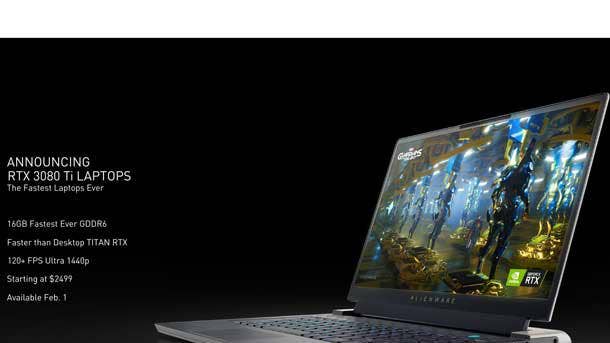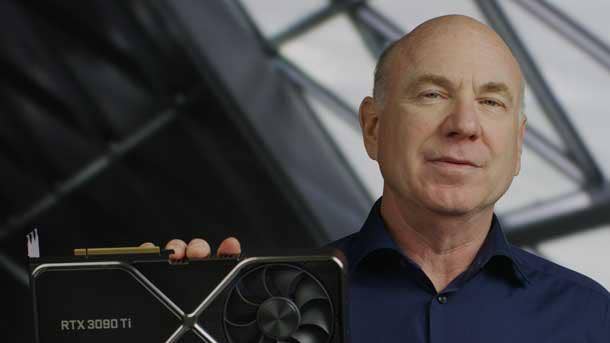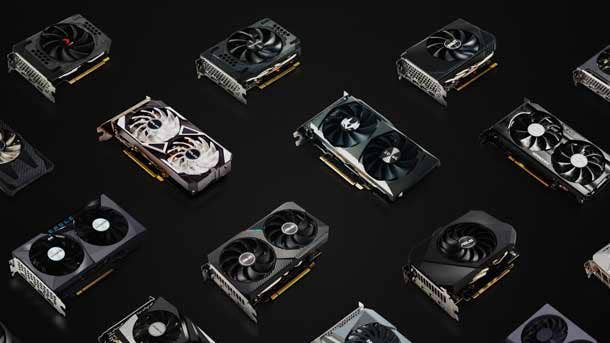Nvidia’s 6 Biggest Announcements At CES 2022
The chipmaker launched new high-end and entry-level GPUs for desktop PCs and laptops while announcing new efforts to expend its hardware ecosystem at its CES 2022 press conference.

New GPUs For You And You – If You Can Find One
Nvidia launched new high-end and entry-level GPUs for desktop PCs and laptops while announcing new efforts to expand its hardware ecosystem at the chipmaker’s virtual CES 2022 press conference. The Santa Clara, Calif.-based made the announcements on Tuesday just after rival AMD showed off an expanding portfolio of GPUs at its own press conference in the previous hour. The big question facing both companies is whether they’ll be able to keep up with demand in the face of ongoing shortages.
[Related: Nvidia CEO: Omniverse Is One Of Our ‘Largest Graphics Opportunities’ Yet]
Beyond announcing new Geforce RTX products for desktops and laptops, Nvidia showed off new hardware and said that hundreds of new laptops are coming this year with Nvidia GPUs.
What follows are Nvidia’s six biggest announcements at CES 2022.
(Pictured: Jeff Fisher, senior vice president of GeForce at Nvidia)

Nvidia Launches GeForce RTX 3080 Ti, 3070 Ti For Laptops
Nvidia is expanding its high-end Ampere GPU options for gaming laptops with the launch of the new GeForce RTX 3080 Ti and GeForce RTX 3070 Ti.
The Santa Clara, Calif.-based company said the new products, which will be available in laptops starting on Feb. 1, are bringing the “flagship” 80 Ti class of GPUs to laptops for the first time after previously only being able for desktop PCs.
The RTX 3080 Ti features 16GB of the “fastest GDDR6 memory ever shipped in a laptop,” according to Nvidia, and it “delivers higher performance” than Nvidia’s Turing-based Titan RTX for desktop. Laptops equipped with the RTX 3080 Ti will start at $2,499.
Nvidia said the RTX 3070 Ti is 70 percent faster than laptops running the previous-generation RTX 2070 laptops and can hit 100 frames per second at 1440p resolution. RTX 3070 Ti laptops will start at $1,499.

Nvidia Launches ‘Monster’ GeForce RTX 3090 Ti With 24GB
Nvidia is once again introducing a “monster” of GPU with the GeForce RTX 3090 Ti.
The chipmaker revealed the GPU behemoth at CES and said it will contain 24GB of GDDR6X that runs at 21 gigabits per second, which it said is “the fastest memory ever.” The GPU will be capable of 40 teraflops for shaders, 78 teraflops for ray tracing and 320 teraflops for AI.
Nvidia said it will provide more details later this month.

Nvidia Launches GeForce RTX 3050, An Entry-Level Desktop GPU
Nvidia wants to get more gamers to upgrade their old graphics cards with the launch of the new GeForce RTX 3050, a new entry-level GPU for desktop PCs.
The RTX 3050 will be available on Jan. 27 starting at $249 from Nvidia’s board partners, and it will be the first 50 class GPU to enable ray tracing in games at more than 60 frames per second.
The GPU comes with 8GB of GDDR6 memory, second-generation RT cores and third-generation Tensor cores, the latter of which power Nvidia’s AI-based DLSS upscaling technology.

Nvidia Lands More Than 160 New Laptop Designs
Nvidia said more than 160 laptop designs coming out this year will feature the company’s GPUs, “creating the thinnest, lightest and most powerful laptops ever.”
These designs include a new batch of Nvidia Studio laptops, which are bundled with software and applications for content creators, including the Nvidia Canvas painting app.
The chipmaker said the Nvidia Studio laptops are equipped with the new GeForce RTX 3080 Ti and GeForce RTX 3070 Ti, which provide seven times faster performance on average for 3D rendering compared to Apple’s latest MacBook Pro 16.
The Nvidia Studio laptops include new designs from ASUS, MSI and Razer, and they support over 200 creative applications, according to the company.

Nvidia Reveals New Certified Monitors, Mice
Nvidia continues to expand its reach across the hardware system with new 1440p esports displays that use proprietary technologies from the chipmaker.
The chipmaker announced 1440p esports as a new category of G-SYNC monitors that are co-developed by OEMs and Nvidia. The goal, according to Nvidia, is to provide gamers with better aiming performance, which can be achieved with larger displays, higher resolutions and smoother moment.
The first batch of 1440p esports monitor in Nvidia’s program include the ASUS ROG Swift 360Hz PG27AQN, which features a 360Hz refresh rate. The others are the AOC AG274QGM - AGON PRO Mini LED, MSI MEG 271Q Mini LED, and ViewSonic XG272G-2K Mini LED, all of which feature mini-LED display technology and a 300Hz refresh rate.
The 1440p esports monitors support Nvidia’s G-SYNC technology, which enables smoother gameplay when paired with an Nvidia GPU. Other Nvidia-specific features include Reflex Analyzer, a one-click tool to measure latency; Dual-Format, which makes it easy to enable 1080p resolution; and Esports Vibrance, which makes colors more vibrant for improved gameplay.
Nvidia also announced that it has announced six new monitors and six new mice part of the company’s Reflex hardware ecosystem for measuring and improving system latency. They include the aforementioned 1440p esports monitors and mice from Alienware, Corsair and other device makers.

Nvidia Launches Omniverse For Creators
Nvidia made its Omniverse platform generally available at no cost, giving content creators the ability to collaborate on 3-D design and simulation projects across multiple applications.
Omniverse is powered by Nvidia RTX GPUs, and it consists of multiple applications, including Omniverse Machinima, a new collaboration tool for animating characters in virtual worlds, and Omniverse AudioFace, a tool for animating faces using only audio. Also new to the platform is Omniverse Nuclear Cloud, which makes it easy to collaborate on large 3D scenes using one click.
The platform supports multi-app workflows with several applications from independent software vendors, including Autodesk 3DS Max, Blender, PTC OnShape, Adobe Photoshop and Unreal Engine 4.